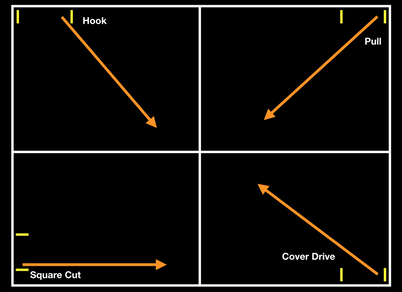Website: www.nickhillcoaching.com
Email: [email protected]
Twitter: @NH_Coaching_
Instagram: nick_hill_coaching_dot_com
Skype: nick.hill.2012
For example, if I am in a Physical Education lesson introducing a new game to pupils I will use more of a Teaching Games for Understanding approach. Then if I am in an after school practice I will use Game Sense coaching as the players already know and understand the basics of the game. Then if I am coaching adults in the evening then I will use a Constraints-based Approach based on how I build my Practice Design.
An example of a Game for Understanding would be… in Softball. Developing the basic understanding of Striking and Fielding Games to pupils new to them.
First up, I would ask the pupils “What are the names of some Striking & Fielding Games out there…?” “What are the key features in those games…?” I would do this to seek what prior knowledge they already have and go from there.
I would leave a pile of equipment on the ground, e.g. different types of balls, a few different types of bats, and some markers to act as bases, and then I would split the group up into mini groups. I would then ask each group to go and set-up their fields and start playing a game for at least 5 minutes.
The basic rules I would give in the beginning would be:-
- Batters: If you hit the ball you must run. To score a run you have to touch all the bases.
- Pitcher/Bowler: The ball has to bounce. Every pitch/ball you have to use a different ball.
An example of using Game Sense would be… in Cricket. Developing Onside and Offside shots in Batting.
I would set up an area of 4 fields with the wickets being on the edges in the corner of each field, and placed about 15 yards apart. The 4 shots that the Batsman are looking to make are a Cover Drive, a Square Cut, a Pull, and a Hook.
The basic rules I would give in the beginning would be:-
- Batsman: If the ball crosses the two outside lines of the corner of the field then they are out.
- Bowlers: The ball has to bounce inside the big hula hoop. (This is to facilitate the different types of shots so that the bounce of the ball will provide opportunities for the Batsman to hit the desired shot.)
An example of using Constraints would be… in Rugby. Developing Counter Attack play.
I would play a Conditioned Game between the two 22m lines acting as the try lines. There would be 3 groups. One group would be in red bibs, another group would be in blue bibs, and then a small third group of players would be in orange bibs, and would always stay on the attacking team. The attacking team would have 2 rucks to score a Try. If a 3rd ruck occurred then the defending team could steal the ball and start Counter Attacking. The players in the orange bibs would then swap sides. A “tackle” would be a good grab, and the ball carrier and the “tackler” would both fall to the ground. The ball carrier would then roll and place the ball. 2 other defenders would then come into the “breakdown” and do 2 push-ups before defending again. A progression would be the attacking team would have to make a Box Kick on the 3rd ruck instead of a breakdown turnover.



